The Hungry Bengal: How a Common Man’s Provocative & Poignant Art Exposed the British in 1943
From pot-bellied malnourished kids to sad faces of mothers hiding their babies in their skeletal embrace, his pen captured the true tragedy of the Bengal famine. #history #ForgottenHeroes

It was yet another day, overrun with darkness and gloom when a man in his late twenties emerged from the shadows, his head full of matted and greasy hair.
As he tugged on the tattered strap of an overused jhola (cotton bag) hanging from his shoulder, his restless eyes behind the thick foggy glasses searched for someone, something or some truth amid the confusion and chaos around him. After all, he was on an important exposé mission.
The man was Chittoprasad Bhattacharya, who exposed the colonial brutality of the British Raj, 77 years ago, with nothing but his raw and powerful sketches of the Bengal famine, scribbled in his tiny notebook.
From pot-bellied malnourished kids to sad faces of mothers hiding their babies in their skeletal embrace, his pen captured the true tragedy of hunger with a silent protest against the imperial Raj’s monstrosity.
Rise of the revolutionary
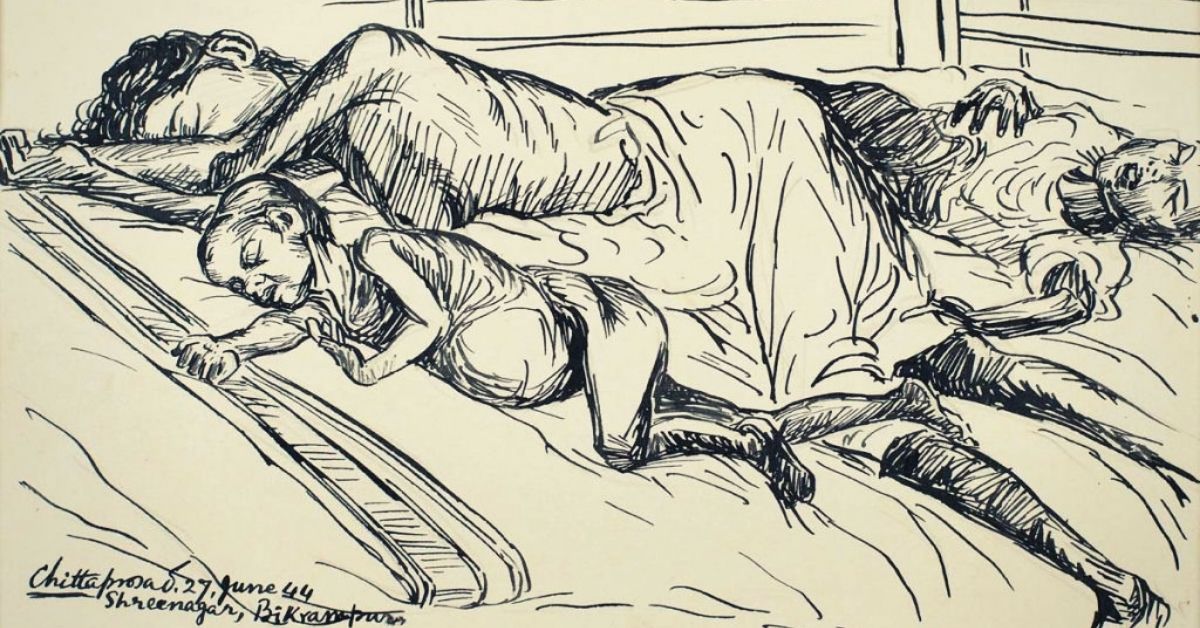
Born in Naihati, West Bengal in 1915, Chittoprasad’s political journey began in the mid-1930s when he was completing his studies at the Chittagong Government College, situated in East Bengal (present Bangladesh).
In April 1930, because of the Chittagong uprising, led by freedom fighter Surya Sen, the city was becoming the epicenter of the Bengal revolution. The crux of movement revolved around the fight against oppression from the colonial rulers and Indian land-owners or zamindars.
Like many young revolutionaries, Chittoprasad found his purpose in the larger fight for his motherland and chose the path of activism. It was the same year when he joined the Communist Party of India (CPI).
Later in the 1940s, inspired by a communist leader, writer and lawyer Purnendu Dastidar, Chittoprasad became an active member and stepped out of institutional confines to take the freedom struggle to the grassroots. He then took refuge at the office of the Student Federation of India in Kolabagan, from where many of his anti-Fascist woodcut prints, cartoons and sketches were published in CPI’s journal called Jana-Yuddha (meaning People’s war). This was a turning point in his life as he began to use art as a tool of political activism.
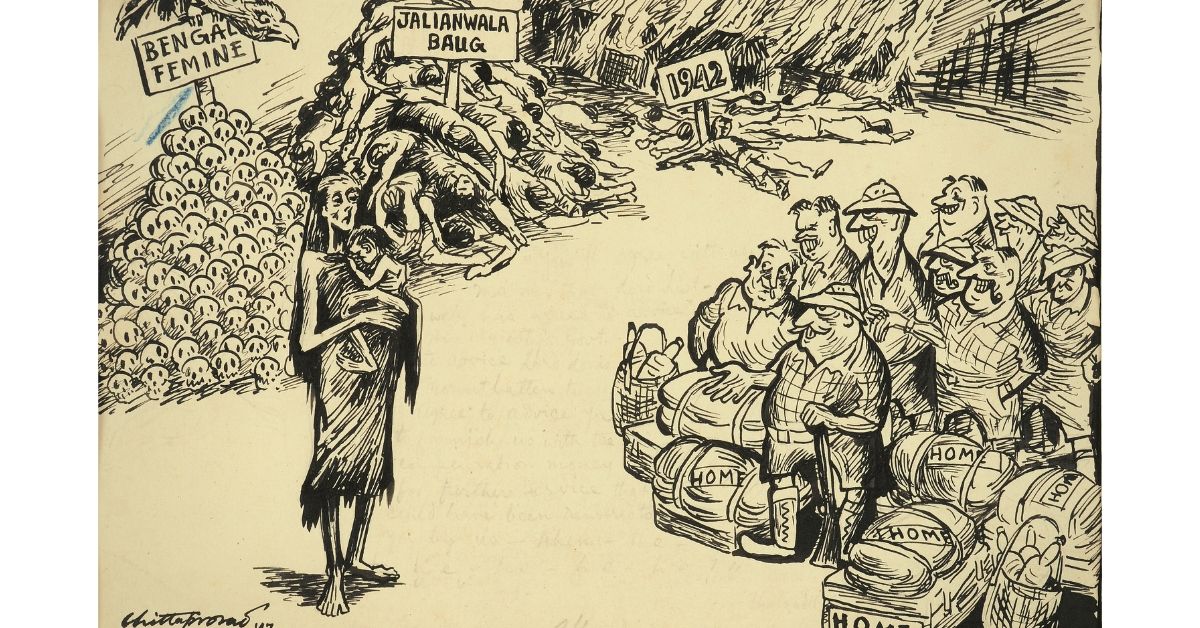
And then in 1943, Bengal was hit with one of the world’s worst man-made disasters—a famine that claimed the lives of more than three million people. This was the outcome of British World War II policies that robbed Bengal and its people of food grains, to feed the British military and citizens.
Despite the ‘mass-murders’ caused by starvation and sheer cruelty of the imperial forces, the western press ignored it and was obsessed with news about World War II.
Owing to this, the famine was largely unreported and undocumented. And so, CPI entrusted Chittoprasad and a photographer Sunil Janah with the sole mission of documenting and immortalising the truth.
Touring across famine-struck districts of Bikrampur and Midnapore, the duo documented grotesque images of human suffering.
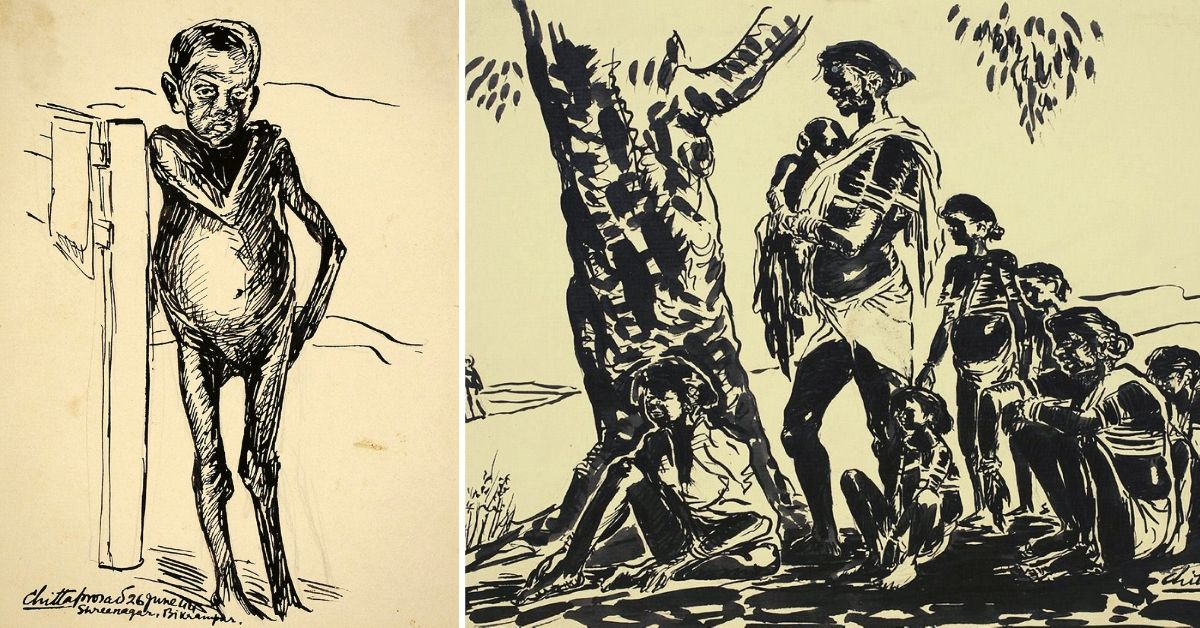
Chittoprasad’s sketches captured horrific scenes of children starving away with an almost translucent layer of skin loosely covering their skeletal structure, communal killings, ravages of war and even the intricate details of lanky men and women with exposed rib-cages, eagerly awaiting the call of death.
These images were and still are poignant and provocative and had a strong impact on its viewers at the time. It was published in 1943 as an illustrated report of the famine in a pamphlet called Hungry Bengal, in an effort to rouse nationalist sentiments. Owing to this, the British wanted to stifle this uprising, and they seized and burnt its copies. All but one survived, and it is now preserved in a bank vault in Kolkata.
An artist who became the voice of India’s suffering
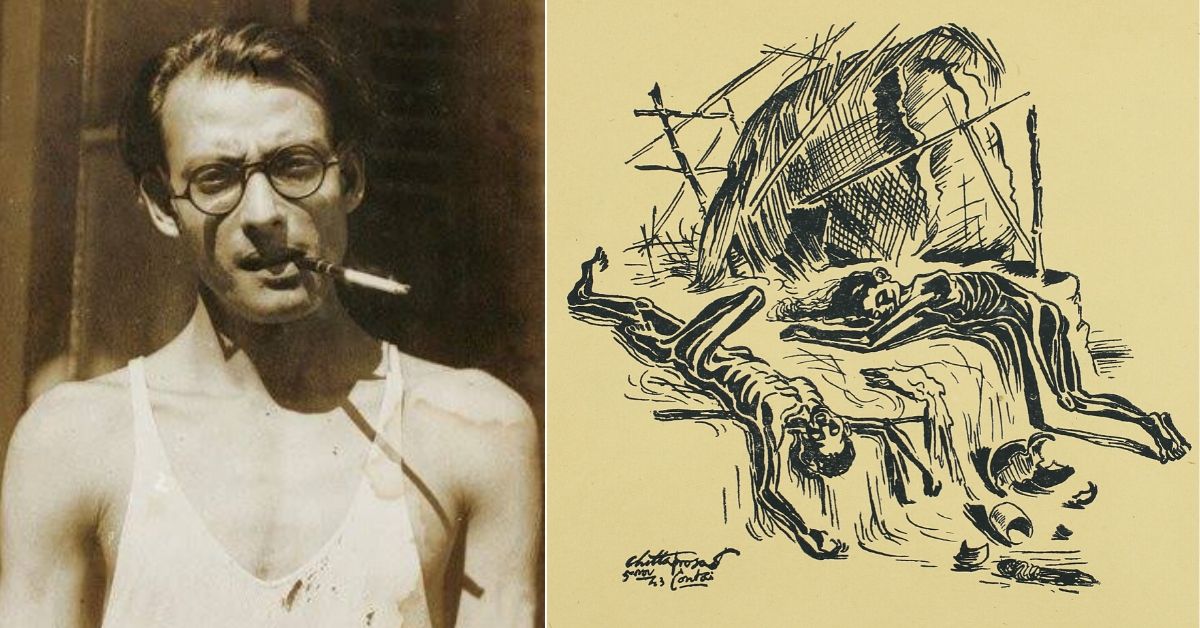
A self-taught artist, Chittoprasad always wanted to study art but was denied admission into the prestigious Kala Bhavana of Shantiniketan and even the Government College of Art and Craft, due to his political affiliations. But, his passion for art was not ready to be doused. So, he shunned the traditional form of tempera paintings that were popularly practiced to glorify India’s spiritual past and instead delved into a style that was straight-forward and raw, depicting the present tragic reality in all its darkness.
Chittoprasad traveled the remotest parts of the state, from villages, hospitals, orphanages to make-shift camps, mirroring the drudgery of poor peasants and labourers and the evil face of poverty, in his black and white sketches. The skeletal faces, lined ribs and barren forests, his confident black strokes reflected the life around him-devoid of colour and joy.
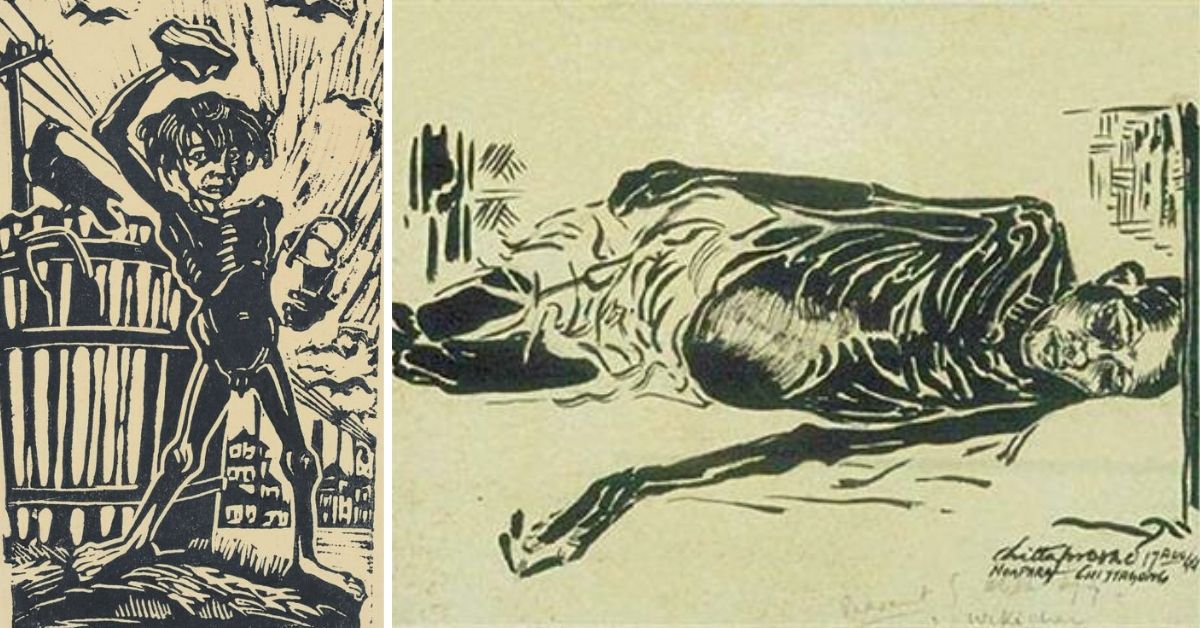
And it was this nerve-wracking aspect that brought his paintings alive and shocked its viewers, waking them up and jerking them to be a part of the change.
Summarizing his extraordinary journey and body of work, Chittoprasad, in a biographical short-documentary, called Confession (1972) by Czech filmmaker Pavel Hobl) says, “To save people means to save art itself. The activity of an artist means the active denial of death.”
Despite repeated upheavals throughout his life, he continued to live by this ideal and constantly pushed boundaries of art to depict the ignored and forgotten stories of human history. It is because of that courage and passion for his art, that the memory of such struggle and rebellion is now forever immortalised in the pages of time.
Also Read: Paris to Calcutta In a Milk Van: A 19,000 km Road Trip That Captured the Sound of Music!
(Edited By Gayatri Mishra)
Like this story? Or have something to share?
Write to us: [email protected]
Connect with us on Facebook and Twitter
If you found our stories insightful, informative, or even just enjoyable, we invite you to consider making a voluntary payment to support the work we do at The Better India. Your contribution helps us continue producing quality content that educates, inspires, and drives positive change.
Choose one of the payment options below for your contribution-
By paying for the stories you value, you directly contribute to sustaining our efforts focused on making a difference in the world. Together, let’s ensure that impactful stories continue to be told and shared, enriching lives and communities alike.
Thank you for your support. Here are some frequently asked questions you might find helpful to know why you are contributing?


This story made me
-
97
-
121
-
89
-
167













